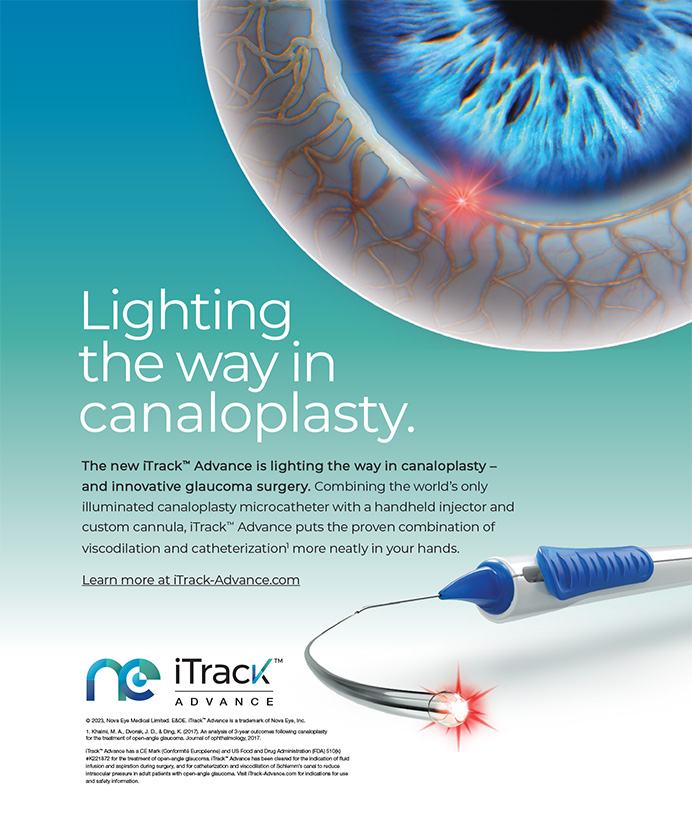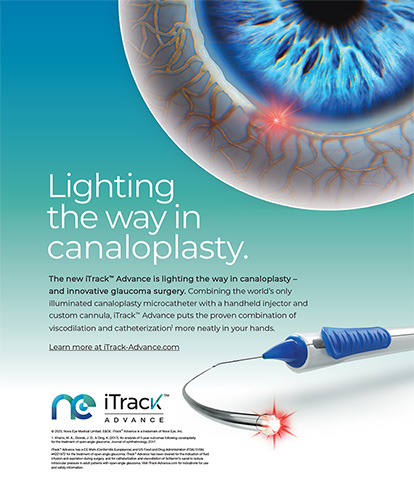Wavefront-guided (WFG) LASIK and wavefrontoptimized (WFO) LASIK are the two most commonly performed laser ablations in the United States. Both technologies are available here at Stanford University, so my colleagues and I wanted to undertake a study to see if there were any meaningful differences between the two procedures.
We performed a prospective, contralateral-eye investigation of 110 eyes (55 patients) that compared WFG with WFO LASIK.
BACKGROUND
In the contralateral study, we randomized each eye according to ocular dominance to either a WFG or WFO procedure. We performed WFG LASIK using the Visx Star S4 IR CustomVue excimer laser (Abbott Medical Optics Inc., Santa Ana, CA), and we performed WFO LASIK with the Allegretto Wave Eye-Q 400-Hz excimer laser (Alcon Laboratories, Inc., Fort Worth, TX). We made all of the flaps with the Intralase iFS femtosecond laser (Abbott Medical Optics Inc.); we set them at a depth of 105 7micro;m, 9.2-mm diameter, and used a superior hinge in all cases.
We closely matched the eyes preoperatively; each group had about 4.75 D of myopia and ± 1.00 D of cylinder. The higher- and lower-order aberrations were essentially identical in both groups.
RESULTS
Aberrations
At 3 months postoperatively, all of the eyes showed increased corneal aberrations, except for trefoil, which was reduced in the WFG group but not in the WFO eyes. These results held steady at 6 months, with a slight increase in higher-order aberrations in both groups. The WFG eyes continued to experience a reduction in trefoil, and there was no change in the WFO eyes—a finding that was true out to 12 months.
The eyes that underwent WFG LASIK had virtually no residual refractive error, whereas those in the WFO group had a slight undercorrection of about 0.25 D.
Predictability
We found that both systems were quite good in terms of predictability. At 12 months, 98% of all eyes achieved within 1.00 D of their intended correction. The predictability was slightly better in the WFG group, however, with 87% of eyes reaching within 0.50 D of the intended correction compared with 78% of the WFO eyes. The scattergram shows excellent grouping for both types of treatment out to 10.00 D (Figure 1).
UCVA OUTCOMES
Using the visual acuity charts from the Early Treatment Diabetic Retinopathy Study (ETDRS), a greater percentage of eyes in the WFG group showed higher levels of UCVA (ie, 20/16, 20/12.5) postoperatively. This finding was statistically significant between the two groups, and it held out to 1 week, when the WFG group had nearly double the number of eyes that saw 20/12.5 or better. At 1, 3, 6, and 12 months, more eyes in the WFG group saw 20/25 or better versus the WFO eyes (Figures 2-5).
Safety
Both procedures were very safe. More than 50% of the eyes in both groups gained lines of BSCVA, and no eyes lost more than one line. This result was observed out to 1 year, with a slight edge—although not statistically significant—to the WFG group (Figure 6).
Contrast Acuity
We investigated patients’ 5% and 25% contrast acuity (BSCVA) at 1, 3, 6, and 12 months postoperatively. We found no difference between the WFG and the WFO groups in terms of 25% contrast acuity. At 5% contrast acuity, however, we found significantly greater gains in the WFG eyes compared with the WFO eyes at all time points (Figures 7-10).
PATIENTS’ PREFERENCES
My colleagues and I administered an extensive questionnaire to the study’s participants. We asked them if they preferred their vision in one eye compared with the other, and if so, which one they favored. Of the patients who indicated a preference, a greater percentage favored the WFG-treated eye at all time points: 55% at 1 month, 60% at 3 months, and 65% at 12 months (Figure 11). Depending on the time point measured, approximately 50% to 60% of the patients preferred their vision in one eye to that of the other.
CONCLUSION
We found that both the WFG and WFO platforms we tested have an excellent safety profile: no patients lost more than two lines of BSCVA, and more than 50% of the eyes in both groups gained one or more lines of BSCVA. There was no significant difference in the induction of higher-order aberrations between the two groups, with the exception of trefoil, which was reduced in the WFG group.
Eyes treated with WFG LASIK experienced significantly greater gains in 5% contrast acuity at all time intervals compared with eyes treated with WFO LASIK. This finding may explain why more patients preferred the vision in their WFG-treated eye. It is important to note that many of these patients had identical visual acuities in both eyes but still preferred the vision in their WFG eye. From postoperative day 1, we observed significantly better UCVA in eyes treated with WFG LASIK compared with WFO LASIK at all time intervals. There was a modest undercorrection in the WFO group, with those eyes showing approximately 0.25 D of residual myopia. This result could potentially be improved by adjusting the treatment nomogram.
This study demonstrated excellent results with both technologies. Surgeons can be confident offering both types of treatments to their patient populations.
Edward E. Manche, MD, is the director of cornea and refractive surgery and professor of ophthalmology at Stanford University School of Medicine, Palo Alto, California. He acknowledged no financial interest in the companies or products mentioned herein. Dr. Manche may be reached at eemanche@yahoo.com.


